Monsters of Grip: Nine Summer-Performance Tires Tested


Even armed with huge horsepower, wind-tunnel development, and a fear-free driver, cars wouldn’t be able to attain big speed without tires capable of handling the inertial forces of 2700-plus rotations per minute. For this test, we gathered tires rated to sustain 168 mph or higher (which means at least a W speed rating). Though we didn’t test that certified durability classification, we did focus on the way these nine radials manage the lateral and longitudinal forces generated on a track or a great stretch of road.
The tires, all size 225/45R-17, hail from the summer-performance category, specifically the max- and extreme-performance subsets. Max-performance tires shift the balance of wet and dry performance that is baked into ultra-high-performance (UHP) summer tires toward the dry, with less optimization for ride and noise. Extreme-performance tires go a step further: They offer the best dry-road performance available for the street. A rainy day won’t sideline a car on extremes, but as a group they are not designed around comfort requirements such as ride and noise.
Unlike our previous examination of summer-performance rubber, we didn’t put a cap on price, though none of these tires costs more than $200. We could not test every tire in the max and extreme categories, so we started with tires we knew had good performance from our experience with them on road cars. From there, we added a few aftermarket-only fitments. The tires in this test-four extreme-performance, five max-performance-range in price from $133 to $199.
Once again, we partnered with Tire Rack and used its South Bend, Indiana, shop and test track as our base of operations. Its staff is our kin. Every employee is genuinely into cars and, not surprisingly, tires.
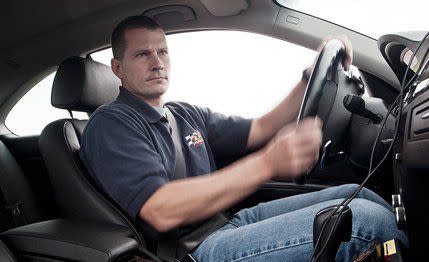
Tire Rack’s product-information specialist, Woody Rogers, loaned us two test cars (E92 BMW 328i coupes). After the tires were broken in-a critical process that removes oils coating new tires-we performed wet and dry braking (50-to-0-mph) and skidpad (200-foot-diameter) tests.
We measured skidpad grip according to our usual procedure, averaging our best counterclockwise and clockwise laps. Braking distance was the average of five stops from 50 mph. Unlike in our normal tests, where we report the second-best stop from 70 mph as a measure of total vehicle performance, the average of five stops from 50 mph shifts the focus to the performance of the tires themselves.
Following those objective tests, we gathered impressions and lap times by driving Tire Rack’s autocross dry and wet. A sprinkler system spewing 300 gallons per minute onto the 0.33-mile course provided the irrigation required.

We also conducted five-mile public-road tests to take sound-level measurements and evaluate the tires’ subtle differences in ride quality. How these factors varied among the tires-and how they were considered in the final results-was small yet significant.
To keep the test as scientifically sound as possible when collecting objective data and making subjective judgments, we ran a reference tire (a UHP all-season Pirelli) at the beginning, end, and two times in the middle of each test to ensure that conditions didn’t significantly change during the day. Plus we had two sets of each tire: one for wet testing, the other for dry-all mounted on identical wheels.
Spencer Geswein contributed his tire knowledge and driving ability, as well as his objectivity. Geswein insisted on doing the test blind, and we followed suit. The tires were tagged with arbitrary letters. We’re accustomed to checking the tire as we get into a car, so to not examine the rubber when we jumped in the BMW 328i test cars required the self-denial of a monk. Rogers held the answer key, not revealing the tires’ identities until the conclusion of all the testing. We wound up with a clear favorite in wet conditions, a favorite in dry conditions, and three days worth of test data to sort through.

Service description: 94Y*
UTQG tread-wear rating: 220 AA A*
Load: EXTRA
Performance category: MAX
Tread depth, in: 10/32
Price per tire: $161
The P Zero’s cellar position surprised us. We’ve been amazed at how this tire utterly transformed the Ford Mustang’s steering precision, and P Zeros are original equipment on exotics such as the Lamborghini Aventador and the Ferrari 458 Italia. But a blind test does not lie.
This tire’s best finishing position in any test was middle of the pack in the wet autocross, just a bit quicker than most of the extreme-performance tires. Geswein called the Pirellis “firm and skatey, and understeer oriented.” Wet-skidpad grip, at 0.79 g, and wet braking, at 111 feet, were worst in the test.
Lapping a dry track didn’t dramatically change our impressions. The P Zero struggled with understeer, and post-limit grip recovery was noticeably worse than with most of the other tires. Steering precision took a hit on Geswein’s ballot as he found himself overcooking corners. Ultimately, he thought the driving precision required for a clean autocross lap simply couldn’t be found for this set.
At $161 each, the P Zero is upper-middle class on the cost scale. A supple ride and quiet operation aren’t enough to pull the P Zero up the finishing order.
* For explanations of these and other parameters, see here.

Service description: 90W*
UTQG tread-wear rating: 200 A A*
Load: STANDARD
Performance category: EXTREME
Tread depth, in: 10/32
Price per tire: $143
Dunlop’s top-hole extreme-performance tire was a mega performer in all categories of our 2009 tire test, where it walked away the clear winner. But all the other tires in this test are either new since 2009 or were excluded by the previous price limit.
The Star Spec’s strength in ’09 was its balance of wet and dry performance. Fast-forward to 2012, and the Z1 slipped to third in the dry autocross and tied for last in the wet autocross. In the latter test, maximum grip felt low, as evidenced by a sixth-place rating on the wet skidpad and despite good turn-in characteristics. Few steering corrections were required and mostly necessitated by loss of grip, not lateral squirminess.
The 0.87-g dry-skidpad result, 0.04 g below the best in test, backed up Geswein’s impression that the Star Spec has “too much understeer balance for ultimate speed and lacks the grip of set H,” a.k.a., the Yokohamas.
Three tread-wear indicators located near the centerline of the Dunlops disappear as the tread wears down. This is an excellent feature every good dry performer should have.
* For explanations of these and other parameters, see here.

Service description: 91W*
UTQG tread-wear rating: 140 AA A*
Load: STANDARD
Performance category: EXTREME
Tread depth, in: 8/32
Price per tire: $176
Press a thumbnail into the tread, and a semicircle remains in the Proxes for several seconds longer than any other tire. Even the Hankook, which shares this tire’s 140 tread-wear rating (lowest here), is much firmer to the touch. This tire is also one of two in the test that come with a warning label regarding low-temperature storage and use.
The Toyo’s second-lowest wet-skidpad performance mostly jibed with impressions from our finely tuned hides. Geswein thought the R1R felt better than the lap times produced and that it “communicated road-surface features clearly but lacked an abundance of grip.” The tire felt great through the short slalom, where grip levels were communicated clearly, but would lose traction in higher-speed corners, causing understeer.
Dry-autocross runs garnered only so-so remarks from testers. This tire also showed the most evidence of wear at the end of the dry test, with most tread corners broken off. Plus, it picked up discarded rubber.
It also generated the worst ride quality and the second-loudest sound level. Ultimately, this stiff-sidewalled, soft-tread-compound tire just didn’t measure up.
* For explanations of these and other parameters, see here.
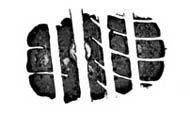
Service description: 94Y*
UTQG tread-wear rating: 300 AA A*
Load: EXTRA
Performance category: MAX
Tread depth, in: 10/32
Price per tire: $147

Goodyear won our 2005 test with its Eagle F1 GS-D3. This new max-performance Eagle F1 Asymmetric 2 is standard equipment on the Porsche 911.
While testing this tire, we couldn’t wait to find out which one we were sampling, especially during the wet autocross, simply because it performed so strangely. Under braking, the tire was stable and arrested speed best, both on the wet autocross and in our wet-braking test. Turn-in came with good bite, too, though the tires quickly lost a solid purchase on wet tarmac and started chattering. Normally, this is a sign that the driver is pushing the car too hard, but the chatter didn’t seem to inhibit our lap times. A big question mark adorned our notebook.
On the dry course, the Goodyear showed less braking control than we felt it had in the wet. It also posted the worst dry grip. Geswein thought the steering precision and lateral firmness were only slightly improved over the reference tire’s. Its lap time was in a three-way tie for fifth with the Bridgestone and the Toyo.
Quiet and composed, the Goodyear rode well, but our evaluator commented on vague on-center steering feel. This tire is no great inspirer of driving confidence.
* For explanations of these and other parameters, see here.
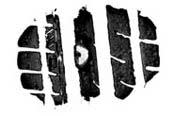
Service description: 91W*
UTQG tread-wear rating: 340 AA A*
Load: STANDARD
Performance category: MAX
Tread depth, in: 11/32
Price per tire: $133
The ContiNaming protocol seldom tells us much about its tires, but the “DW” in ExtremeContact DW stands for DryWet.
The wet half had us gushing. It was by far the handiest tire on the irrigated autocross and secured a marginal, 0.1-second victory over the Michelin. This tire did as it was told every time. “Excellent wet performance!” declared Geswein. Communication was top-notch, which earned the Conti a subjective perfect 10 in the wet.
It also earned top honors in ride comfort and noise, and it was the most affordable radial in this test, at $133 per tire.
The DW performed clean dry runs with no nicked cones, though we applied more steering corrections than expected. More than any other tire in the dry, this DW was resilient when driven aggressively. Grip fell off predictably, and holding the edge of performance was easy. Recovery from a slide was also quick work.
Like the Dunlop, this tire has wear indicators in the tread (they read “DW”). As the tread wears down, the “W” will disappear, indicating it is no longer suited to the wet. Scoring the second-fewest points in dry performance secured its midpack rating. A little more “D” in the “DW” would go a long way.
* For explanations of these and other parameters, see here.

Service description: 94W*
UTQG tread-wear rating: 140 A A*
Load: EXTRA
Performance category: EXTREME
Tread depth, in: 9/32
Price per tire: $140
Hankook made its reputation by matching big-name performance to budget prices. To wit: Its Ventus V12 EVO, a max-performance tire, finished runner-up in our previous test. The second-most-affordable tire here, the Ventus R-S3 is an extreme-performance summer tire and delivered top-notch dry numbers to back that up.
No other tire got within two feet of its dry-stopping distance-a large gap considering that the spread from best to worst is less than seven feet. It also tied the Yoko for best dry skidpad. On the dry autocross, Geswein found the R-S3 and the Michelin to be similar, which is to say forgiving, capable, and consistent.
The extreme-performance branding is honest, as the Hankooks’ wet recital was unimpressive. It fell into the bottom half in wet braking and skidpad, and tied with the Dunlop for the absolute worst wet-autocross lap time. The biggest demerit was in post-limit grip recovery.
If you’re on a budget and looking for a streetable tire that will occasionally venture onto a dry track, the R-S3 is a solid choice-especially when you consider that the tire that finished ahead of it by just three points is the most expensive here.
* For explanations of these and other parameters, see here.
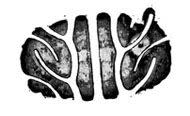
Service description: 91W*
UTQG tread-wear rating: 180 AA A*
Load: STANDARD
Performance category: EXTREME
Tread depth, in: 9/32
Price per tire: $199
Tire Rack’s Rogers spends half a year managing a fleet of seven test cars and more than 100 test drivers. He said that on any given day with a single driver, the Michelin, Yokohama, Toyo, or Hankook might finish quickest in a dry autocross because of variances in driving styles. But, on average, the Yokohama ends up the winner, meaning more drivers go quicker with this tire than any other. They had better, for $199 apiece.
The Yoko’s podium finish comes down to its dry performance. Geswein effused, “This tire thrived on driving the dog snot out of it.” Every aspect of this tire’s dry performance (steering, grip, feedback, recovery, and precision) was strong.
Geswein’s enthusiasm might have been tempered had he been aware of how the Yokohama would fare in the wet: Not so great. The Yokohama finished just ahead of the bottom markers, with lap times at the slow end and midpack grip.
Subjectively, the AD08 seemed louder than its 66-decibel reading, with thwacking sounds over bumps. Plus, its ride was pretty firm. Those are two annoyances we would gladly trade for a dry-performance advantage if we were regularly indulging in track days.
* For explanations of these and other parameters, see here.
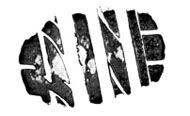
Service description: 91W*
UTQG tread-wear rating: 280 AA A*
Load: STANDARD
Performance category: MAX
Tread depth, in: 10/32
Price per tire: $166
Notes from Geswein on the Potenza S-04 Pole Position from both the wet and dry autocrosses include the phrase “easy to drive.” We liked the low-speed grip in the wet and the excellent dry-steering precision. The Bridgestone exhibited no mind-blowing traits, just solid performance all around.
Our notes from the dry-autocross course commended this tire’s steering precision as well as its nice combination of roadholding attributes. The Pole Position’s lap time, in a three-way tie for fifth place, trailed that of the Hankook by nearly a full second.
At $166 apiece, the S-04 gains a few precious points in pricing, but second overall? The high finish can be attributed to it doing everything well, bolstered by its top score in ride quietness. Second place in wet-braking and skidpad tests backed up our subjective feeling of high grip on the wet autocross, too.
The Bridgestone presents a great blend of wet and dry performance, plus it’s quiet and provides a good ride. For an extra $44 a set, however, the Michelin Pilot Super Sport does everything the S-04 Pole Position can do, and more.
* For explanations of these and other parameters, see here.
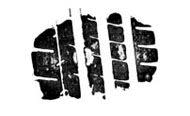
Service description: (94Y)*
UTQG tread-wear rating: 300 AA A*
Load: EXTRA
Performance category: MAX
Tread depth, in: 10/32
Price per tire: $177
Two years ago, Ferrari launched the 458 Italia a few months before Michelin released its Pilot Super Sport (PSS). Because Ferrari wanted the PSS for the 458 but Michelin didn’t want to preempt its own release, some of the early 458s were delivered on “Michelin Pilot Sport PS2” tires. But those PS2s were actually PSSs. It isn’t hard to understand why Ferrari wanted the “custom” PSSs for the 458.
We praised the PSS for its steering precision in the wet, second only to the Conti. Having the most lateral grip in the wet, at 0.86 g, helped close the lap-time gap with the Conti, too, but the Michelin got there with less finesse and feedback.
It felt firm and planted on the dry autocross and brought the steering wheel to life in our hands, as did the Yoko, the Hankook, and the Dunlop.
The Michelin PSS finished with the second-quickest lap in both the wet and dry autocrosses, just 0.1 and 0.2 second behind the leaders, respectively.
The PSS has the best balance of wet and dry performance we’ve ever experienced in testing. The minute compromises in each discipline make “super” a worthy part of its name. It’s our winner.
* For explanations of these and other parameters, see here.
('You Might Also Like',)

 Yahoo Autos
Yahoo Autos 